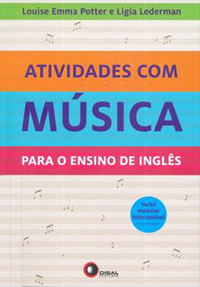By - Paulo Torres

What should be the key features of a speaking activity? Helping students get the most out of speaking activities is not always an easy task. Teachers often say that students are reluctant to work on speaking activities or talk very little during these activities.
“A lot of students are very unwilling to speak English in the classroom because they’re shy, or worried about making mistakes, or afraid of losing face. So many either don’t speak at all or use mother tongue instead of English. We need to think of ways to make it easier for them to participate” (UR, 2016, p. 85).
According to Spratt, Pulverness and Williams (2011), students need three key features to perform speaking activities well. They are function, exponent and context.
Function – reason why we communicate.
Exponent – language we use to express a function.
Context – situation.
Let’s consider the three key features to teach speaking separately.
Function – reason why we communicate. Agreeing, complaining, interrupting, and accepting are some examples of functions.
Exponent – language we use to express a function. How are these exponents of disagreeing different from one another?
I don’t think so.
I’m afraid I disagree.
I’m not so sure about that.
I beg to differ.
They express different levels of formality. Using the level of formality that suits a situation/context is important and this is called appropriacy.
Although the three key features are important for students to perform speaking activities well, I would say exponent is the most important feature because when students do not know the language needed to participate in an activity, they are very likely to use their mother tongue or may not take part at all (UR, 2016).
Look at this table.
|
Context |
|
Exponent (in quotation marks) |
|
Function |
If students do not know the language (exponent) needed to participate in the activity, it may be hard for them to express the function (suggestion / making a suggestion). Knowing the context without knowing any exponent might not be helpful either.
Ur says that reviewing in advance words or expressions students may need for the task is useful. “Write up the key items on the board, so that students can glance at them to refresh their memories as they talk” (UR, 2016, p. 90).
Write to me at torreslpaulo@gmail.com and receive the instructions on how to use the activity Like, Comment, Share with your students. This activity has the three key features to teach speaking.

REFERENCES:
Spratt, M.; Pulverness, A.; Williams, M. The TKT Course. Second Edition. Cambridge
University Press, 2011.
Ur, P. 100 Teaching Tips. Cambridge University Press, 2016.
Following are seven extra tips to help students get the most out of speaking activities based on my teaching experience, not necessarily in the order presented.
Tip 1: Setting a time limit helps students know when they should stop talking. This may be helpful as students can see the activity as doable.
Tip 2: Before students role play a conversation, divide the class in two groups (A and B). Have A students brainstorm arguments/ideas for the task before they perform it. B students should do the same. If you have a large class, you can have two A groups and two B groups, or more. This helps them have more ideas prior to the role-play and makes them feel more confident.
Tip 3: Having students role play the same conversation with a different pair can give them the chance to correct the mistakes they made in the first role-play making them feel more confident and helping them increase student talking time. Talking to a different person about the same topic seems to be more motivating than role playing the same conversation with the same person.
Tip 4: Asking students to report the content of their pair work activity to another student or to the whole class helps them focus more on the activity as they know they need to remember the main idea of their conversation, helping them develop a very important skill which is summarizing. Furthermore, they will practice talking about other people not only about themselves. While a student is reporting to the whole class, the other ones can be encouraged to ask questions. This will be a much more meaningful and engaging activity.
Tip 5: From time to time, ask students to record themselves delivering a short speech (10 to 30 seconds) on a given topic. Also, give them a checklist so that they can assess themselves on their performance. By working on this kind of activity, you help students become more independent and give them a reason to speak English out of class.
Tip 6: Encourage students to use English in class, not only when they are working on a speaking activity, but also when they want to ask/say something. When students use the target language in this situation, it is much more likely that they will learn faster and retain the information due to the relevance of the utterance.
Tip 7: So that students are encouraged to use new vocabulary and grammar structures; it is paramount that you also use them in class. By doing so, students will see that they are not only used in books.
Which of the tips did you find most useful? Have you ever used any of them with your students? Which one(s) would like to try with your students?
Paulo Torres has been working in the field of language teaching for more than 20 years. He has worked as a teacher, teacher educator and language consultant for public and private institutions with students of all ages. He also has national and international experience as a teacher and speaker. He holds a B.A. in English & English Literature and a postgraduate degree in Bilingual Education and Cognition. His main interest in language teaching is continuous professional development.
LIVRO RECOMENDADO
